As an Amazon Associate I earn from qualifying purchases.
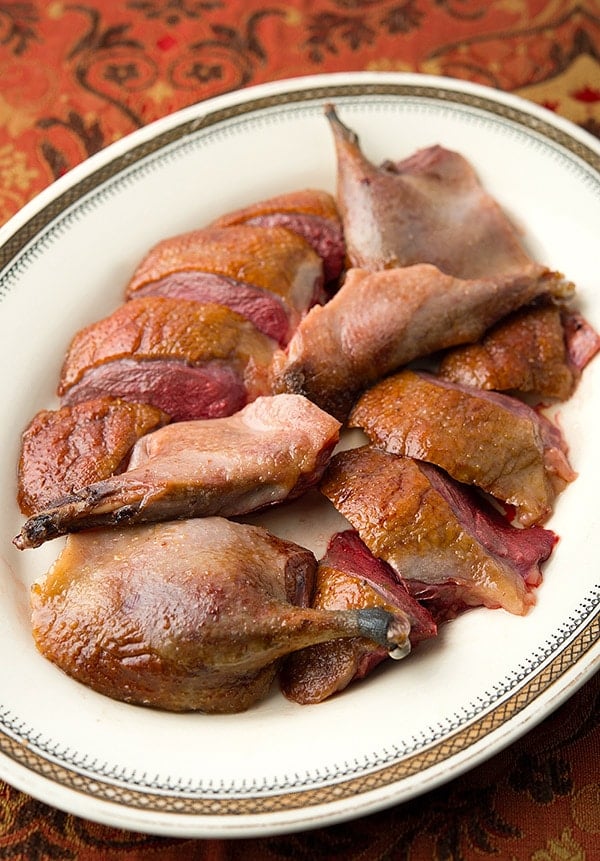
A perfect, whole roast wild duck is more of an idea than a reality.
It is virtually impossible to get that mystical combination of crispy skin, tender meat and just enough fat to make things interesting just by roasting a bird in an oven. You either get crispy skin and overcooked breast meat, or nicely cooked meat with skin that has not yet had enough time to crisp.
That idea in your head of such perfection is like a teenager’s daydream of some swimsuit model or hot teen idol. Nice, gauzy, but not actually real. No, roasting a duck is more like a marriage: It hinges on compromise.
Let me begin by saying you can’t really pull this off with domesticated ducks or geese, and even some of the hugely fat wild ducks we get here in California’s Central Valley are too fat for this recipe. Fat, as you might know, is an insulator and a lubricant. Too much and it will keep the skin too moist to crisp and shield the meat from the warm caresses of your oven.
So start with any wild duck that has a layer of fat 1/8 inch or less on its breast. Yes, I know that a) this sounds insane to those of you living in migratory states, but believe me, we get such birds here; and b) there’s no way to truly test the actual thickness of the fat without removing the breast.
Suffice to say that if, after plucking, you say to yourself, “Damn, that’s a fat duck!” don’t then use this recipe. Use my slow-roasted duck recipe instead.
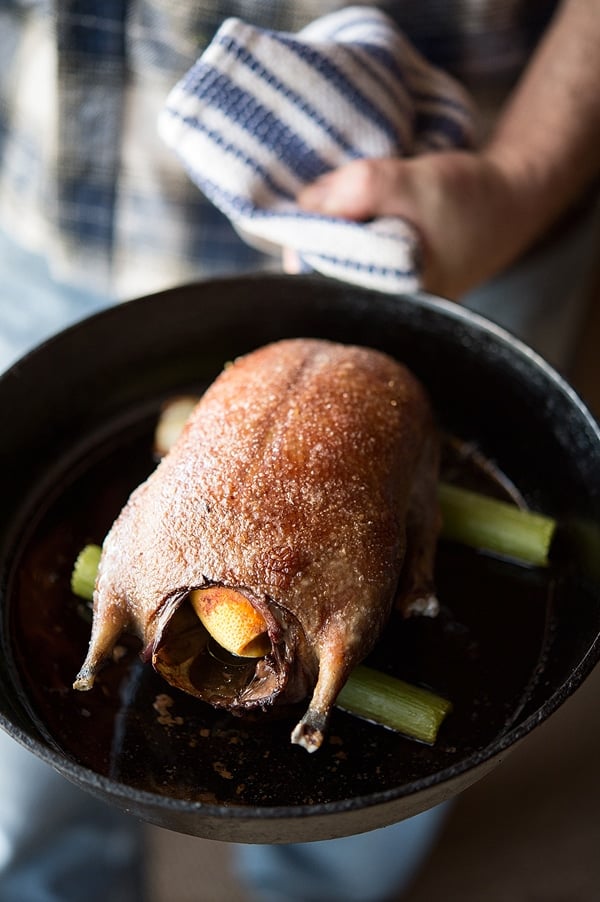
The key to successful roast wild duck is a hot oven. A really hot oven. I never roast whole ducks at less than 400°F and I prefer 500°F. I met someone the other day who roasts at 550° — all I can say to that is he’s got one hell of an oven!
The smaller the bird, the hotter the oven. Teal cook better at about 500°F, while a big mallard, canvasback or small goose (Ross’, cackler, Aleutian, etc) will cook better closer to 450°F. Let your oven preheat a while, too. I have a pizza stone in mine, and I don’t put the bird in the oven until the stone hits the right temperature, which is usually 20 minutes after my oven tells me it’s there.
You also need to decide where you want to be on the continuum of crispy skin to perfectly roasted meat. Obviously the longer you cook the more done your meat will be, and the more crispy your skin will be. Now I like breast meat medium-rare, but only when it’s just the breast. When it’s part of a whole duck, I take it to a solid medium, even medium-well: Still pink, but definitely cooked through.
Why? So the legs can get cooked enough to eat. See? Like a marriage. Compromise.
What you see in these pictures is a whole roasted canvasback, just cooked in a 475°F oven for 22 minutes. Everything is done, but as you can see there are spots on the legs where the skin is not crispy. I don’t mind this, but there is a way to get closer to that perfection, if you are willing to work for it.
Optional Step No. 1: Sear the legs and wings in a pan before you roast the duck. I do this sometimes by putting a little duck fat in the pan I am going to roast the duck in and searing just the legs and wings of the bird while the oven is heating. I do this by holding the whole bird with tongs and continuously moving the bird around to get just the legs and wings, which need a little more time to cook.
Optional Step No. 2: Once your duck has been roasted and rested, carve and then sear the skin to crisp it up. Again, I use the pan I roasted the ducks in, which will have plenty of fat that has come off the birds. This method can be very good when you find out your duck legs are really underdone. A quick sear on the meat side and the skin side usually gets them close to where you want them to be.
When I am just roasting a bird on a weeknight I rarely do the optional steps, but if it’s a special occasion I will often do one or even both.
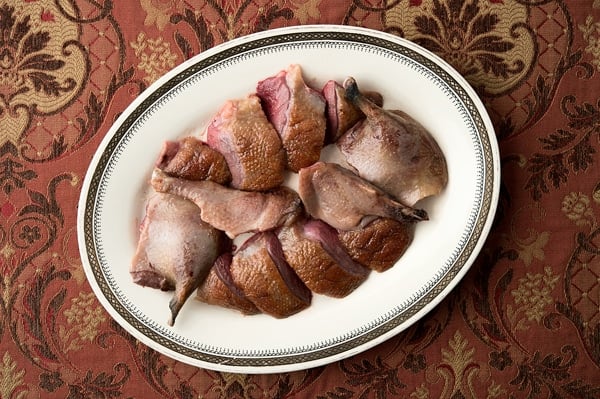
Wild geese can be a little harder to roast. They tend to be older and tougher than ducks, but you can use this recipe easily for small geese such as Ross’ geese, Aleutians or cacklers or smallish specklebelly geese. Large geese, such as normal-sized specklebellies, snow geese and typical Canada geese can be roasted whole, but I don’t really recommend it. Giant Canadas are, in my experience, terrible roasted whole.
As for sauces, I have a selection of wild game sauces elsewhere on this site. And perfect side dishes are mashed potatoes, polenta, roasted potatoes, spaetzle, etc. A good green salad is nice to cut the fattiness of the duck, too.
Here is another way to roast a duck, but this is only if it is very fat.
Like this recipe? I hope you’ll also like my cookbook dedicated to ducks and geese, called, of course: Duck, Duck, Goose: The Ultimate Guide to Cooking Waterfowl, Both Farmed and Wild
Roast Wild Duck
Ingredients
- 4 small ducks (teal wood ducks, wigeon) or 2 to 4 larger ducks
- Lemon or orange wedges
- Salt
- 2 to 3 celery stalks
- Black pepper
Instructions
- Preheat oven to 450°F or higher. I often cook ducks at 500°F, and small ducks are best cooked at these high temperatures. (You can get away with 425°F if that's as high as your oven will go.) Let the oven preheat a good 20 to 30 minutes. Let the ducks rest at room temperature while the oven heats up.
- If the duck is reasonably fat, use a needle to pierce the skin where there is a lot of fat under it: The front of the breast, between the breast and legs, at the flanks, and all over the back of the bird. Be careful not to pierce the meat of the breast. Rub lemon over the bird and dust it with a good salt. Stuff the spent lemon or orange wedge inside the duck.
- Place a few celery stalks onto an oven-proof pan (I use a cast-iron frying pan), arranging them so you can rest the ducks on top. This prevents the ducks from sitting in their own juices. Roast in the oven as follows: About 10 to 15 minutes for teal or other small ducks, 13 to 20 minutes for anything up to the size of a gadwall, 18 to 25 minutes for a mallard or canvasback. The key here is an internal temperature of about 140 to 145°F at the deepest part of the breast meat, which is in the front third of the breast. Don’t have an instant read thermometer? Get one. Ducks need to be cooked medium-rare to medium. An overcooked duck is a sad thing.
- Take the duck out, move it to a cutting board and rest it. Let small ducks rest about 5 minutes. Large ducks need to rest closer to 10 minutes, and geese up to 15 minutes.
- If you want a simple pan sauce, remove the celery and stir a tablespoon or two of flour into the drippings. Let this cook on the stove (you might be able to do this solely with the residual heat in the hot pan until this roux is the color of coffee-with-cream. Add a tablespoon of Worcestershire sauce, some wine or brandy and the juice of a lemon. If the sauce is too thick, add a little water or stock. Whisk everything to combine and add salt to taste. Turn off the heat, add a tablespoon of minced parsley and a knob of butter. Swirl to combine and serve.
Nutrition
Nutrition information is automatically calculated, so should only be used as an approximation.
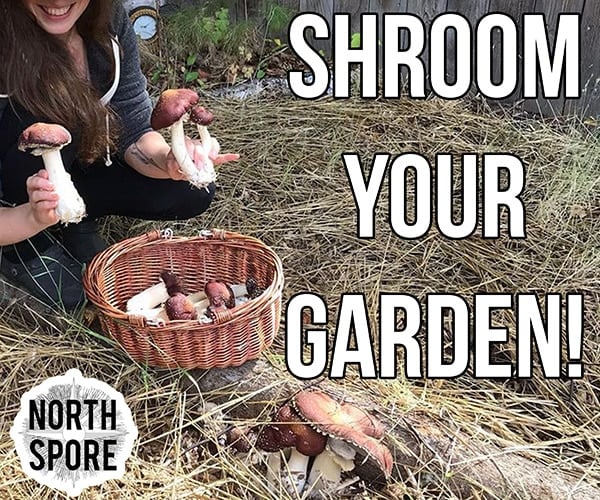

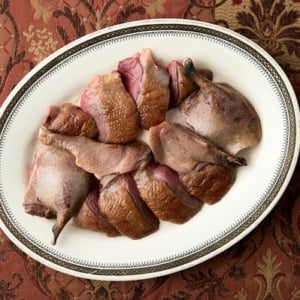

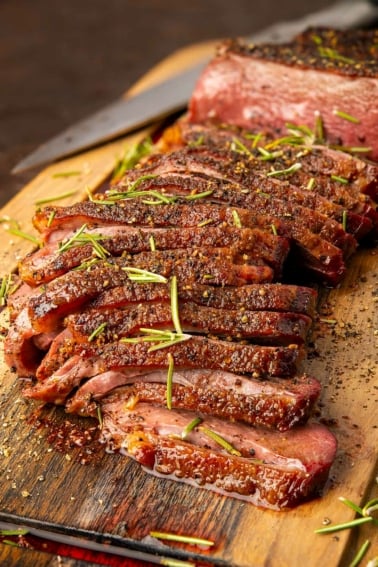
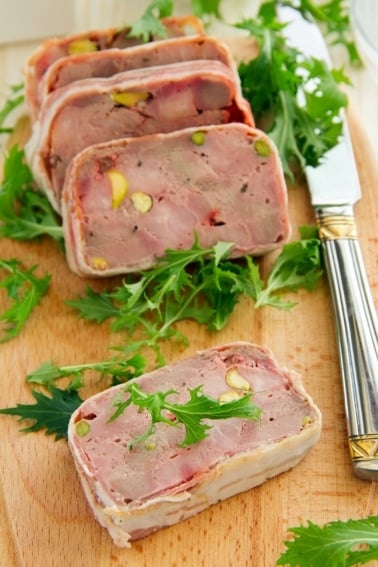

Your recipe is a disaster. I followed your 18-25 minutes for a small mallard duck and had the oven preheated for 25 minutes at 525 F. We put a thermometer into the breast and it was still virtually cold at the 18 minute mark. I put it back in to the oven and watched the time and temp. It took 35 minutes to finally reach 145 in the breast meat. I took it out and tented for 5 minutes and when we went to slice into the breast it was pretty much raw!! Not just a tad pink, I’m talking BLOODY. We were extremely disappointed in these awful directions and ended up having to pan fry some meat so we could finally have our dinner.
Courteney: That is impossible. Probably two things happened, maybe three. First, your duck was probably not room temperature; this makes a big difference. Second, there is no way your oven was actually 525 degrees if the duck was cold after 18 minutes. Third, and I don’t know this but am guessing, the mallard was probably very fat. If it was, I have another recipe for really fat birds, the slow roasted duck, that works better with super fat ones. I am sorry you had a bad experience, but I have literally cooked hundreds of birds this way, and this method has been used by game cooks for several hundred years, with good success. Something must have gone wrong, but it was not this recipe.
The last ducks in my freezer were 3 green-wing teal, and I tried your Grilled-Roasted Duck on page 837 of your book, which came out friggin perfect. Last year 100% of my ducks, i broke down into parts – gizzards, hearts, livers, legs, wings, breasts and fat, but those Teal were so damn good, this year I plan on Whole Roasting / Grilling my birds.
Question: I bought a budget 4 x burner propane bbq, which should get hot enough, but I have found no recipes for a Rotisserie duck recipe? Thanks!!
I treat mergansers like fish and use them in a fish stew recipe.
What I have started doing is carving off and eating the breast chunks first. Then I will throw the duck back in the oven, back side up, under the broiler for a few minutes. This has been getting the wings and legs closer to perfection, and crisping up all that skin on the bottom side of the duck. Heaven.
Just did this reciepe with my first ever canvasback. Turned out great. The breast meat was like a good sirloin steak. Love the site. Keep up the good work.
I have been going duck hunting with my dad for years and i have learned a couple of GREAT recipes along the way. As I went to college and moved away from home, my trips home have never included enough time to get a full blown “How to roast a duck” instruction. So i used this. And it went SO well. I use an orange instead of a lemon. I squeeze half of it on with about 5 min left in cooking time so that i still get the flavor while still getting the crispy skin from a dry bird on the way in. I haven’t had much luck with the sauce, the celery seems to absorb most of the “juice” but there’s enough moisture left in the bird that it was perfectly good without a sauce. Serve with boiled-then-broiled potatoes and garlic covered asparagus and you’ve got yourself a feel-good meal that will impress the hell out of your friends and yourself! GO YOU!
Hank: Thanks for posting this recipe. I have only ever slow roasted ducks until now. I tried this out the other day with pretty good results. The 145 internal temp was just a little underdone for my liking, but that is an easy fix.
The biggest trouble I had was a house full of smoke. The fat dripping from the birds into the pans smoked quite a bit. Is there a way to prevent this?
Thanks,
Rob
Rob: Yes. Put a little water in the pan.
I’m located in southeast alaska and we get a good mix of sea ducks in with the mallards and teal. I know a lot of people avoid them because of the strong fishy smells but i’ve had good success with breasting them and letting the meat rest for a day in a simple brine in the fridge. If the flavor is still too much, try soaking in tomato juice then adding creole seasoning and a light smoke.
Mathew: I love sea ducks, just not roasted whole.
First off, wanted to say thanks. I was given hunt gather cook awhile back and it’s great reference in the kitchen… But I was wondering your thoughts on this recipe with a sandhill crane? Its bigger then a small goose, and not nearly as fatty as one either. I was thinking maybe 450 for an hour, but idk, curious what u thought? Thanks*
Clint: I wouldn’t roast a crane whole. I’d cook the breasts like a big steak and cook the legs slow and low in a Dutch oven or slow cooker.
I followed this recipe for a half dozen Central Valley wigeon that got passed to me because no one wanted to eat them at the club. Amazing meal. Won’t pan-fry or sear again.
Thank yall!
Want crispy skin and meat cooked to your liking? Use a propane torch to finish the skin after cooking. Cooks nicely without any residues or unwanted tastes. I cook steaks in a sous vide cooker and before I serve them, I sear them with my torch. Perfect inside and out!
Donald: Doesn’t work, sorry. I’ve tried it. Problem is that ducks are too fatty. So when you sear with a torch or a Searzall, it will crisp momentarily, but the fat under the skin then moistens it again.
Ok. Just plucked and torched my first duck and then gutted it. What will happen if you roast a whole duck and you haven’t gotten out every little bit of the little bits and pieces inside? I have rinsed them well and only clear water is coming out, but there is still some connective type tissue inside.
Thank you for this great recipe. I have never cooked duck before and with your help it turned out great. The only thing different I did was brush the skin with butter and garlic before putting it under the broiler for 2.25 minutes. Thanks again.
Do you need to age Wild ducks in a refrigerator for 3 to 5 days before you cook them ? Also is this the same for Venison before you cook it.?
You can bleed out those fishy birds for about 3-4 days in the fridge in a big bowl of water ….changing out water often ……. Works best when you cut up duck i
Hank I’ve been following this site for about a year now and finally shot a duck other than a mallard( I’m in Northern Illinois) and they happened to be a pair of Buffleheads. I plucked them whole since they’re small and aged them a few days. Couldn’t find much on specifically cooking buffleheads but i think I’m going to give this high heat whole roasted recipe a try just to get an idea of how they taste so i can figure out how to cook them for next time. Any tips that you would recommend?
Kurt: Oooh… Buffleheads. That’s a hard one. In my experience, they taste pretty strong, and not in a good way. About 80% of their diet is animal, namely invertebrates. I’d roast them and serve them with a very strong sauce, like barbecue or curry or somesuch.
I’ve been admiring and using your site and recipe advice for a few yrs now. I absolutely can read until bedtime. A true renasaise man. I am the gal amongst many hunters of all types of game from all over the world. Yes I sometimes travel and hunt with them. But mostly end up getting something from freezer and consulting your vast knowledge and very interesting take on the adventure and lure. Thanks. You are my found jewel. Lana jo long Paducah Ky.
Hoolio’s (mergansers), goldeneye, buffs and other “meat eating fowl” can be done into a pate’. We generally boil with onion, garlic and celery in a large pot. Remove the breasts to a cutting board and dice. Place into a blender with sour cream, chives, a bit of rosemary, salt, pepper, cream cheese, and Tony Cachere’s creole seasoning. Process together into a paste. Remove and put in the fridge to cool. Serve with melba toast and beer.
Absolutely love some advice, love helping people cook their game,Their is a few other game bird’s partridge,pheasant,grouse & caper, also do red dear, roe dear which is abundant,all over most parts of Scotland. All types of trouts & salmon,also an intruder the grey squirrel as a starter its most lovely
Mergancers and Coot are not ducks and they have wildly differing diets. I was raised that if you shoot it you eat it or give it to someone ready to eat who will eat it. As a young boy the urge to shoot something when the duck hunting was slow was hard to contain. Now a Mergancer is a mistake looking into the sun. Finding anyone who would or will take a Mergancer and actually eat it was impossible so I learned to eat them. Coot on the other hand were welcome by some people as they were by our family. Breasts marinated and then sauted and served rare with a sprinkle of sauted onion or shallots. Legs and gizzards went into the gumbo pot. Mergancers, marinated and then deep fried were tolerable. Shot some Buffies layout hunting a week or two ago in Door County, Wisconsin. These were the fattest wild ducks I have ever cleaned even the body cavities were full of fat. How would they fare sauted in your duck breast receipe? In the midwest spoonies seem to run about 10 good tasting to 1 that has a “foul” taste. With their numbers increasing they make a good addition to the hunt as they decoy nicely,and my lab is more than willing to retrieve them.
Roy: I am not a fan of buffleheads. I have always found them to be fishy. But maybe they’re eating something nice where you live, who knows?